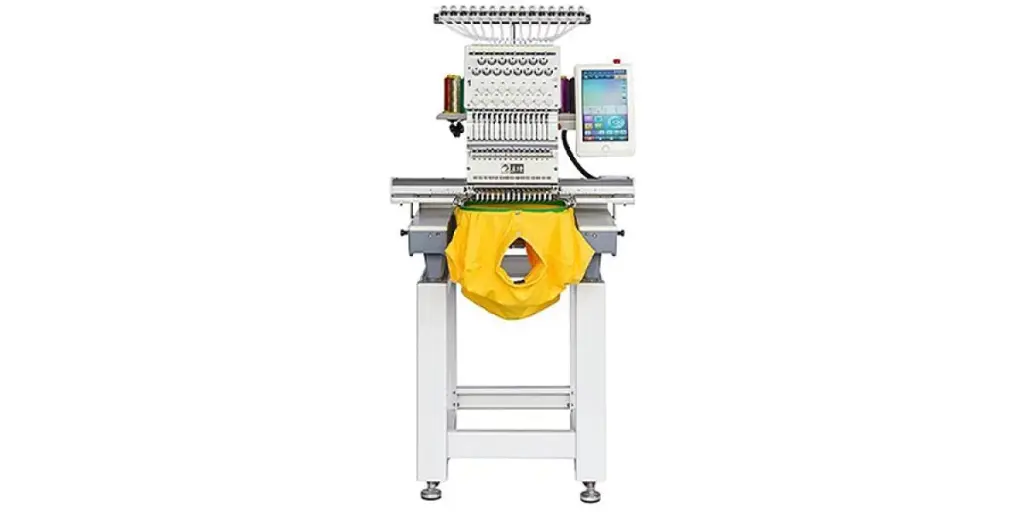Grains are an essential input for a range of foods and beverages, many of which are consumer staples. However, research reveals that post harvest grain losses can reach as much as 80% of total production, and grain drying techniques are a major contributor to these losses.
For this reason, businesses can boost their yield by ensuring they have the right grain drying equipment. This blog will therefore highlight the various grain dryers available on the market, and outline the key factors to consider to ensure one purchases a grain dryer that suits one’s business needs.
Table of Contents
Grain dryer market size
Types of grain dryers
Key factors to consider when choosing grain dryers
The bottom line
FAQs
Grain dryer market size
Verified Market Research valued the global market for mobile grain dryers at US$ 132.1 Million in 2020 and estimated that the market would grow at a compound annual growth rate (CAGR) of 4.45% to reach US$ 187.3 Million by 2028.
Several factors would facilitate this market growth, including:
- Increasing demand for food due to an increase in global population.
- Technological advancement that improves modern grain dryers efficiency, energy conservation, and automation.
- Grain dryers quickly dry the grains, prevent spoilage, and minimize losses from climate change and weather variability.
- Farmers have increased awareness of post-harvest losses and their consequences and now demand grain drying equipment.
Types of grain dryers
Grain dryers are specialized machines designed to reduce the moisture content in harvested grains. They prevent spoilage, mold growth, and insect infestation to ensure the grains remain optimal for use or sale.
The following are the main types of crop dryers for your business:
Natural-air grain dryers
Natural-air grain dryers, known as unheated air dryers, are grain-drying systems that utilize natural air movement and temperature to remove moisture from corn, wheat, soybeans, and rice.
How they work
The dryer consists of a fan that draws ambient air from outside and pushes it through the grain bed.
As the air passes through the grain bed, it carries the moisture from the grain. The moist air is then exhausted from the drying system, allowing fresh dry air to enter and continue the drying process.
The process stops when the moisture content of the grains reaches an equilibrium with the ambient air.
The drying rate depends on air temperature, humidity, and airflow rate.
Pros
- They are cost-effective since they don’t require additional fuel or energy sources.
- They consume zero energy and have lower operating costs.
- The slow drying process of natural-air dryers helps maintain the quality of grains.
- No technical expertise is required to operate and maintain.
Cons
- Longer drying time.
- They are highly dependent on weather conditions.
- Limited drying capacity.
Batch dryers
As the name suggests, batch dryers dry a fixed quantity or batch of grain at a time. You can use them as wheat, soybeans, rice, or corn dryers.
How batch dryers work
- You begin by loading a batch of wet grain into the drying chamber. The batch size depends on the capacity of the dryer.
- The Batch dryer utilizes a fan to circulate heated air through the grain bed. The fan draws ambient air, heats it, and then directs it through the grain to remove moisture.
- You can use propane, natural gas, electricity, or biomass as a heat source.
- As the heated air passes through the grain bed, it absorbs moisture from the grains. The moisturized air is then expelled from the dryer.
- Once the drying process is complete, the dried grain is unloaded from the dryer.
Pros
- Batch dryers offer flexibility in drying different types and quantities of grains.
- It allows for better grain quality control.
- They are less reliant on favorable weather conditions
Cons
- Longer drying time than continuous airflow dryers.
- Limited capacity, thus unsuitable for large-scale operations.
- They require more manual labor than continuous airflow dryers.
- Higher initial cost.
Continuous flow grain dryers
Unlike batch dryers, continuous-flow grain dryers dry grains continuously and uninterruptedly. You’ll often find them in large-scale farm operations.
How continuous flow grain dryers work
- You feed the harvested grain into the dryer through an intake system using a conveyor belt through a filling auger.
- The grain is transported into the cleaning machine before moving to the drying chamber.
- And as the grains move through a drying chamber, the heated air is circulated to absorb moisture and promote evaporation.
- The heater’s burner uses propane, natural gas, or diesel to generate heat, while the fan in the chamber ensures uniform airflow to prevent hot spots.
- Continuous flow grain dryers also have moisture meters to help monitor your grain’s moisture content.
- Once grains reach the desired moisture content, they are discharged from the dryer and can be stored.
Pros
- They provide a high drying capacity for quick and efficient processing.
- The controlled airflow ensures uniform drying, thus minimizing grain spoilage.
- They save time since they operate continuously.
- The ability to monitor and adjust the moisture content prevents over and under-drying.
Cons
- They require significant investment to purchase and install.
- The drying process consumes a lot of energy.
- They occupy a larger footprint, thus requiring adequate space for installation and operation.
Mixed-flow dryers
If you want a test of the batch dryer and continuous flow dryer, a mixed-flow dryer is your go-to machine. It combines the advantages of concurrent flow and counterflow drying systems.
It employs vertical and horizontal airflow patterns for efficient and uniform grain drying. Some mixed dryers have vacuum cooling, allowing farmers to cool the grain before storing it in the bin.
How it works
- You load the grains into the dryer through an inlet at the top.
- The distributor evenly distributes the grain across the drying chamber for uniform drying.
- A fan creates a controlled airflow from the sides of the dryer that passes through the grains.
- The drying air is heated using various heat sources – natural gas, propane, or electricity and enters the chamber from the bottom or the side.
- As the heated air flows through the crops, it absorbs and carries the moisture through an exhaust system.
- Once the grains achieve the desired moisture level, the machine discharges them through an outlet.
Pros
- Mixed-flow dryers provide efficient drying.
- They can handle larger quantities of crops than other drying systems.
- The improved airflow design result in reduced energy consumption.
Cons
- Higher upfront costs.
- Its complex design makes maintenance and troubleshooting challenging.
- If not adequately controlled, it can lead to grain damage.
Key factors to consider when choosing grain dryers
Several crucial factors should guide a farmer’s decision-making when selecting a suitable crop dryer for agricultural operations. Here are some points to consider:
Capacity and throughput requirements
As a farmer, the total volume of grain you handle during the harvest season and desired moisture levels determine the capacity of the dryer you choose.
Nevertheless, it is also essential to consider future expansion or changes in production. If you plan to increase your crop yield, choose a dryer to accommodate the potential growth.
Fuel and energy efficiency
You’ll need a fuel source if you are using other crop dryers besides natural air dryers. And while propane and natural gas are most common because of their cost-effectiveness and availability, evaluating the availability and cost of these fuel sources in your area is essential.
Additionally, you want to choose a dryer with high energy efficiency ratings to optimize your operational costs and better drying results.
Evaluating Drying Performance
One of the main causes of postharvest loss is uneven drying, which is why it’s essential to pay attention to the drying performance of the dryer.
Here is how you determine a dryer’s performance:
- Consider the heating system and temperature controls. Dryers with advanced features are ideal since they offer precise temperature control to dry different grain types.
- Ensure the corn dryer has adequate airflow and ventilation for efficient moisture removal.
- You can also choose a dryer with sensor technology to help with moisture monitoring. Fortunately, modern cereal dryers often come with moisture sensors that allow farmers to adjust the drying process automatically.
Construction and durability
Buying a grain dryer is a considerable investment, and all buyers will want a positive ROI. The longevity and performance of the machine are therefore essential.
This means one should look for dryers built with high-quality materials and robust construction techniques. Most farmers choose stainless steel components because they’re durable and corrosion-resistant.
You should look out for a dryer with proper weather sealing and corrosion-resistant features to withstand challenging outdoor conditions.
Additionally, opt for a dryer that is easy to maintain, with accessible components and clear documentation to minimize downtime.
Safety features
Safety is often overlooked when selecting a cereal dryer, but it’s vital. Look for models with essential safety features like fire prevention and suppression systems.
These systems detect and extinguish potential fires. You don’t want to see your grain and equipment go up in smoke!
A good grain dryer should also have overheating and overloading protection mechanisms. These features can trigger an automatic shutdown, thus protecting the dryer from damage or malfunction.
Warranty and support
When investing in a grain dryer, make sure you understand the manufacturer’s warranty terms. A comprehensive warranty protects your machines against potential defects or issues during the specified period.
Additionally, check if the manufacturer provides technical support or has service centers in your region. Support from the technical team can minimize potential downtime and ensure smooth operation.
Cost analysis and return on investment
While cost (budget) is one of the most valuable considerations, you should evaluate it alongside the long-term return on investment (ROI).
Before settling for a drying machine, consider the initial purchase price and other operational costs, such as fuel consumption, maintenance, and repairs, to determine its cost-effectiveness.
Once you have the cost, estimate the return on investment over its life period. Choose a grain dryer with cost savings potential.
The bottom line
For farmers, the work isn’t over once the grain has been harvested. Instead, one needs to ensure grains are safely stored and are ready for the market.
After harvesting, one should ensure the grain is cool and dry before storage. For this, one needs a suitable grain dryer tailored to one’s business needs for improved grain quality.
By investing in the right grain dryer, one can minimize post harvest grain losses and forge a path to farming success where grain remains in optimal condition.
FAQs
What are the factors to consider when choosing a grain dryer?
When purchasing a grain dryer for your farm, you should consider grain type, moisture content, drying speed, weather conditions, drying capacity, energy efficiency, and space requirements.
How many BTUs does a grain dryer use?
The number of BTUs (British Thermal Units) needed for a grain dryer can vary depending on the type and size of the dryer, the grain, and the desired drying speed. Grain dryers typically range in BTU capacity from thousands to millions of BTUs.
The manufacturer will provide information on the BTU capacity to help you gauge the dryer’s optimal performance.
What is a good dryer capacity?
There is no one-size-fits-all since a good dryer capacity depends on your specific needs and the volume of grain you handle during the harvest season.
A good dryer capacity strikes a balance between meeting your current grain drying requirements and allowing room for potential future growth.
What are the disadvantages of grain dryers?
While grain dryers have several advantages, they have a few drawbacks, Including:
- High initial costs
- Noise and environmental impact
- Maintenance and repairs
- Space limitation
- Complexity.
What are the factors affecting the drying rate?
Several factors can influence the grain drying rate, including:
- Adverse weather conditions
- Grain thickness and density
- Grain size
- Airflow rate
- Drying method.








